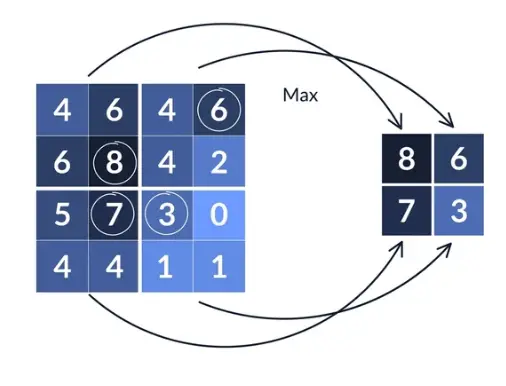Pooling in Convolutional Neural Networks
Convolutional Neural Networks (CNNs) have revolutionized the field of computer vision, enabling machines to recognize and interpret images with remarkable accuracy. One key component contributing to the success of CNNs is pooling. In this blog post, we will explore what pooling is, how it works, and its importance in CNNs.
What is Pooling?
Pooling, also known as subsampling or downsampling, is a technique used in CNNs to reduce the spatial dimensionality of feature maps. It is typically applied after the convolutional layer, which extracts important features from the input image.
The purpose of pooling is to progressively reduce the size of the feature maps while retaining the most important information. By reducing the spatial dimensions, pooling helps to make the CNN more computationally efficient and less prone to overfitting.
Types of Pooling
There are several types of pooling commonly used in CNNs:
1. Max Pooling
Max pooling is the most popular and widely used pooling technique. It divides the input feature map into non-overlapping regions and outputs the maximum value within each region. By taking the maximum value, max pooling preserves the most prominent features and discards irrelevant or noisy information.

2. Average Pooling
Unlike max pooling, average pooling calculates the average value within each region of the feature map. It provides a smoother downsampling effect and can be useful in certain scenarios where preserving the average intensity is important.
3. Global Pooling
Global pooling, also known as global average pooling or global max pooling, takes the entire feature map and outputs a single value. It effectively reduces the spatial dimensions to a scalar value, which can be useful for tasks such as image classification.
How Does Pooling Work?
Pooling operates on a sliding window, also known as a pooling window or pooling kernel, which moves across the feature map. The size of the pooling window and the stride, which determines the step size of the window, can be adjusted to control the downsampling effect.
For example, in max pooling with a pooling window of size 2×2 and stride 2, the window moves in steps of 2 pixels and selects the maximum value within each 2×2 region. This effectively reduces the spatial dimensions by half.
The pooling operation is applied independently to each channel of the feature map. This means that if the input has multiple channels, such as RGB images, pooling will be performed separately on each channel.
Benefits of Pooling
Pooling offers several benefits in CNNs:
1. Dimensionality Reduction
By reducing the spatial dimensions of the feature maps, pooling helps to reduce the computational complexity of the network. This allows CNNs to process larger images and more complex datasets efficiently.
2. Translation Invariance
Pooling helps to make CNNs more robust to translations in the input image. By selecting the most important features within each pooling region, pooling ensures that the network focuses on the presence of certain features rather than their exact location.
3. Feature Generalization
Pooling helps to generalize the learned features by summarizing the information within each pooling region. By selecting the maximum or average value, pooling captures the most salient information while discarding less important details.
FAQs about Pooling in CNN
Q: Can pooling be applied multiple times in a CNN?
A: Yes, pooling can be applied multiple times in a CNN. However, it is important to balance downsampling and preserving the spatial resolution. Too much pooling can lead to a loss of fine-grained details.
Q: Is there a specific pooling technique that is better than others?
A: The choice of pooling technique depends on the specific task and dataset. Max pooling is commonly used due to its effectiveness in preserving important features. However, average pooling or global pooling can also be useful in certain scenarios.
Q: Does pooling introduce any additional parameters to the network?
A: No, pooling does not introduce any additional parameters to the network. It is a parameter-free operation that reduces the spatial dimensions of the feature maps.
Q: Can pooling be used in other types of neural networks?
A: Pooling is primarily used in CNNs due to their effectiveness in processing visual data. However, similar downsampling techniques can be applied in other types of neural networks to reduce dimensionality and improve computational efficiency.
Q: Can pooling be combined with other operations in a CNN?
A: Yes, pooling can be combined with other operations such as convolution, activation functions, and fully connected layers in a CNN. These operations work together to extract and process features from the input data.
Pooling plays a crucial role in the success of convolutional neural networks. By reducing the spatial dimensions of feature maps while retaining important information, pooling helps to make CNNs more efficient, robust, and capable of handling complex visual tasks.

